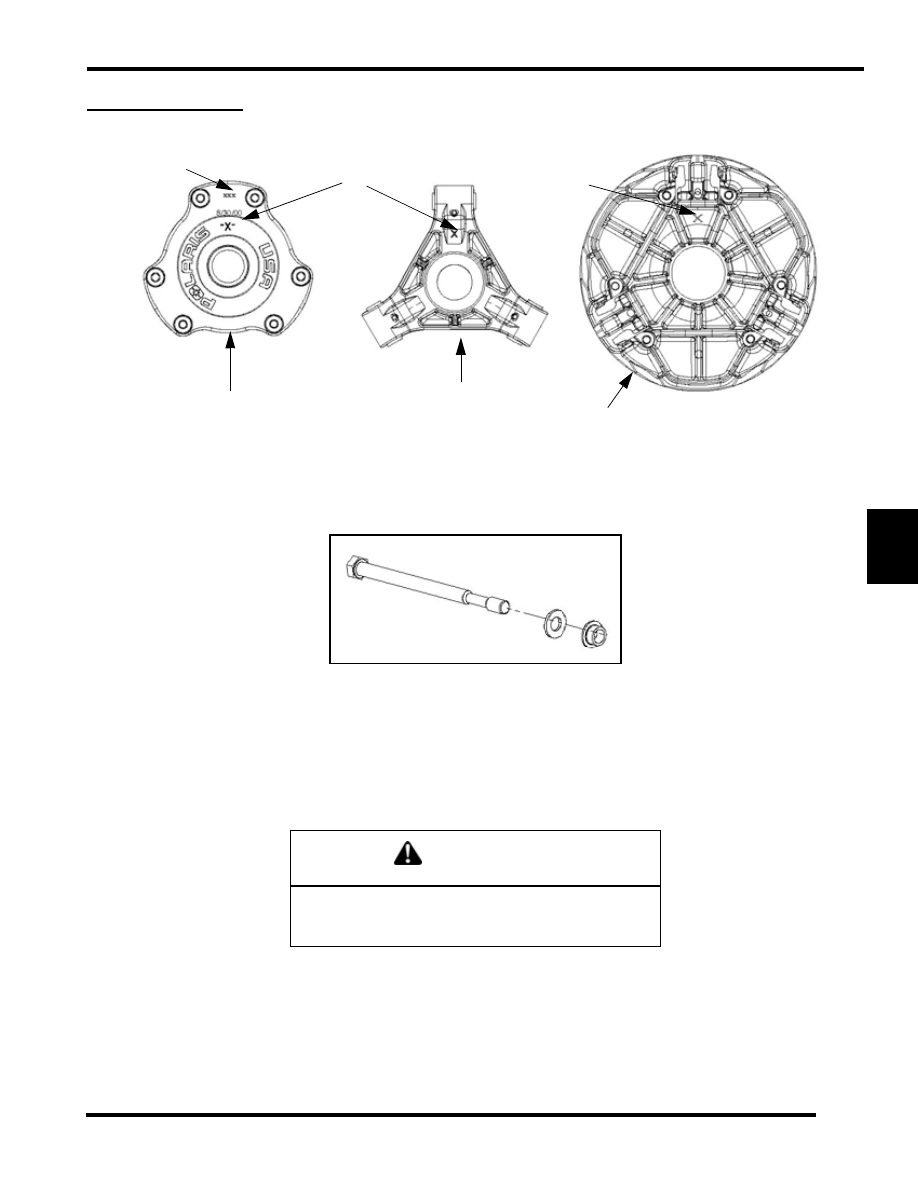Snowmobile Polaris Two Stroke (2007 year). Instruction - part 41

6.15
CLUTCHING
6
DRIVE CLUTCH
Identification
Every clutch will have the last three digits of the clutch part number etched on to the cover (A). The “X” (B) marking is an index
mark where the clutch cover (C), clutch spider (D) and the stationary sheave (E) should line up when the clutch is assembled.
Drive Clutch Removal
NOTE: All clutch tools can be found at the beginning of this chapter.
1.
Remove the belt.
2.
Place the clutch holding tool (PN 9314177-A) on the drive clutch.
3.
Remove the drive clutch retaining bolt. Note the placement and number of washers on retaining bolt.
4.
Insert the correct clutch puller into the retaining bolt hole.
5.
Tighten the puller into the clutch. If the clutch does not come off, strike the clutch puller head with a hammer. If the clutch
does not “pop” off, continue to tighten the clutch puller, and repeat this step.
CAUTION
Do not use an impact wrench to remove or install the
clutch bolt or clutch puller. Damage to the clutch and/or
crankshaft can occur.
A
B
C
D
B
E
(Domestic style)